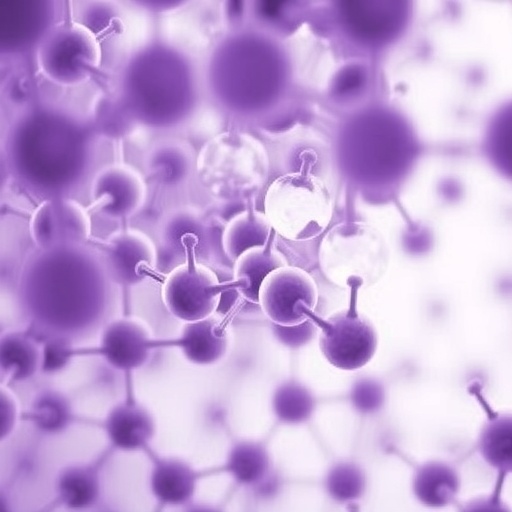In a groundbreaking advancement for natural product discovery, scientists have leveraged terabase-scale long-read sequencing to explore the immense biosynthetic potential locked within soil metagenomes. This innovative approach, detailed in a recent study, illuminates previously uncharted territories of microbial diversity and unveils bioactive molecules with promising antimicrobial activity. By harnessing cutting-edge DNA extraction and sequencing technologies alongside sophisticated bioinformatics, researchers are now able to decode complex microbial genomes from environmental samples on an unprecedented scale. This leap forward not only enhances our understanding of microbial ecology but also opens avenues for novel drug discovery in the battle against antimicrobial resistance.
The research began with meticulous sample collection at a pristine forest research center in New York State, where diverse soil and sediment samples were obtained. Employing a precise bacterial cell isolation technique using nycodenz gradient centrifugation, cells were efficiently separated from the soil matrix, preserving high molecular weight DNA crucial for long-read sequencing. This methodological refinement effectively reduced contaminants often coextracted from soil, thereby improving downstream sequencing quality and assembly fidelity. The isolated microbial communities represented a broad phylogenetic spectrum, including key pathogenic and environmental taxa, setting the stage for comprehensive genomic exploration.
Following cell isolation, the scientists implemented a suite of DNA extraction protocols tailored for metagenomic samples, ranging from direct soil lysis to innovative gel plug techniques that preserve ultralong DNA fragments. These protocols employed a combination of enzymatic lysis steps—including lysozyme and achromopeptidase treatments—followed by rigorous purification processes such as sucrose gradient size selection and electroelution. Such carefully optimized protocols were critical for capturing DNA fragments often exceeding hundreds of kilobases, enabling subsequent long-read sequencing approaches to unlock the full genetic complexity of soil microbiomes.
Long-read nanopore sequencing played a pivotal role in this study. Utilizing Oxford Nanopore Technologies’ latest flow cells and sequencing kits optimized for ultralong and high-fidelity reads, the research team generated an extraordinary 2.5 terabases (Tbp) of data. An advanced duplex basecalling workflow enhanced the accuracy of raw reads, resulting in datasets with quality values exceeding Q20 for fragments longer than 20 kilobases. This enormous volume of high-quality genetic information was foundational for the researchers to piece together massive contigs, assembling near-complete genomes from highly complex metagenomes.
The assembly efforts were computationally intense, requiring access to high-performance computing resources with terabyte-scale memory. Employing the metaFlye assembler in metagenomic mode, researchers successfully reconstructed over 500 contigs exceeding one megabase in length. These contigs collectively represented comprehensive or near-complete genomes, providing rich insights into microbial taxonomy and functional potential. The assembly was further polished and annotated using state-of-the-art tools, which facilitated the identification of ribosomal RNA operons, tRNA genes, and biosynthetic gene clusters (BGCs) associated with natural product biosynthesis.
A particular focus was placed on nonribosomal peptide synthetases (NRPS), a prolific class of enzymes responsible for synthesizing diverse peptide-based natural products, many of which exhibit potent biological activities. By targeting AMP-binding domains characteristic of NRPS through hidden Markov model searches, the team assembled and analyzed candidate gene clusters, enabling deep phylogenetic and functional characterization. This targeted approach uncovered rich clusters encoding novel peptide synthetases, highlighting an untapped reservoir of biosynthetic diversity encoded within soil bacterial communities.
To complement metagenomic characterization, cultured isolates were obtained from the same soil samples using optimized low-nutrient and soil-extract-enriched media. These cultures yielded a diverse array of bacterial genomes, which were individually sequenced and assembled to high quality, enabling direct cross-comparisons between metagenomic and culture-derived signatures. Analysis of BGCs from isolates revealed overlaps with metagenomic sequences, validating the presence of biosynthetic potential accessible through cultivation as well as cultivation-independent approaches.
Perhaps most strikingly, advances in bioinformatics facilitated detailed predictions of chemical structures encoded by NRPS gene clusters. By applying a rigorous criteria-based filtering strategy to select bioinformatically tractable BGCs—favoring canonical domain architectures and excluding clusters rich in tailoring enzymes—the researchers generated linear structural hypotheses for peptide products. These predictions drew on domain specificity codes to infer amino acid sequences, incorporating modifications such as epimerization and methylation. Approximately one-fifth of the detected NRPS clusters yielded confident structure predictions, forming the basis for synthetic efforts.
In a tour de force, a subset of predicted peptide natural products were chemically synthesized using sophisticated solid-phase peptide synthesis techniques. This included both linear and cyclic peptides, with and without lipid modifications, employing protocols optimized for side-chain cyclizations and coupling reactions. Purification and structural validation were accomplished via high-performance liquid chromatography, high-resolution mass spectrometry, and nuclear magnetic resonance spectroscopy, confirming the expected compositions and configurations of synthesized compounds.
Biological activity assays revealed several synthetic natural product analogs possessed potent antimicrobial properties against a broad panel of bacterial pathogens, including representatives of the notorious ESKAPE group. Minimum inhibitory concentration (MIC) determinations and time-kill curves demonstrated bactericidal effects at low micromolar concentrations, rivaling clinically relevant antibiotics. Importantly, toxicity assessments against human cell lines via MTT assays indicated favorable selectivity indices, underscoring the therapeutic promise of these molecules.
Further mechanistic investigations revealed that some synthetic peptides directly interact with bacterial proteases, exemplified by binding studies demonstrating interaction with ClpX, an essential AAA+ ATPase chaperone. Thermodynamic analyses using isothermal titration calorimetry indicated high-affinity binding, suggesting interference with proteostasis pathways. Complementary assays, including membrane depolarization and lipid antagonism experiments, elucidated modes of action, with some peptides exhibiting membrane-targeted effects analogous to known lipopeptide antibiotics.
To probe resistance potential, the team isolated spontaneous resistant mutants under selective pressure, mapping genomic changes that confer resistance. Passaging experiments revealed the frequency and stability of resistance evolution, informing considerations for future therapeutic development. The genomic context of resistance mutations illuminated bacterial defense mechanisms and highlighted critical targets for antibiotic action.
This comprehensive multi-disciplinary effort exemplifies a new paradigm in natural product discovery. By coupling terabase-scale long-read metagenomic sequencing with advanced bioinformatics, targeted synthetic chemistry, and functional assays, the researchers have not only expanded our catalog of bioactive molecules but also provided an integrative framework for exploring the vast chemical space encoded in environmental microbiomes. The implications for addressing the antibiotic resistance crisis and discovering novel therapeutics are profound.
Collectively, this work underscores the transformative potential of integrating environmental genomics with synthetic biology and chemical synthesis. As sequencing technologies continue to evolve, the depth and resolution with which we can explore complex microbiomes will only improve, revealing further layers of microbial chemical ingenuity. Through such integrative approaches, the promise of the natural world to yield new medicines can be fully realized, fueling innovation in drug discovery and microbiome science for years to come.
Subject of Research: Discovery of bioactive molecules through large-scale long-read sequencing of soil metagenomes.
Article Title: Bioactive molecules unearthed by terabase-scale long-read sequencing of a soil metagenome.
Article References:
Burian, J., Boer, R.E., Hernandez, Y. et al. Bioactive molecules unearthed by terabase-scale long-read sequencing of a soil metagenome. Nat Biotechnol (2025). https://doi.org/10.1038/s41587-025-02810-w
Image Credits: AI Generated
Tags: bacterial cell isolation methodsbioactive molecules antimicrobial activityDNA extraction sequencing technologiesdrug discovery antimicrobial resistanceenvironmental sample analysisgenomic exploration microbial communitieshigh molecular weight DNA preservationmicrobial ecology research advancementsnatural product discovery techniquesphylogenetic spectrum of soil taxasoil metagenomes microbial diversityterabase-scale long-read sequencing





